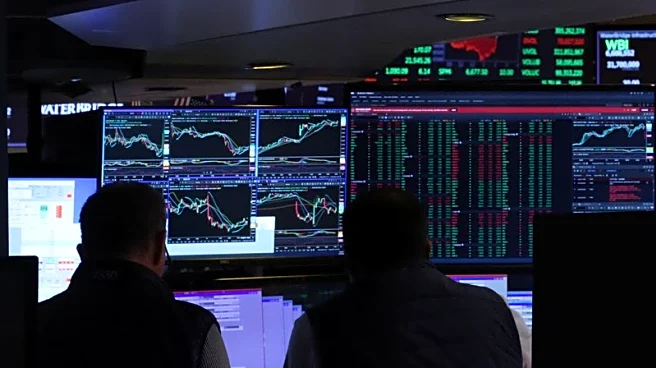What's Happening?
Wells Fargo is intensifying its efforts to expand its credit card market share, aiming to compete with major players like JPMorgan Chase and Citigroup. Despite being the fourth-largest bank in the U.S., Wells Fargo holds only a 4% share in the credit card market, trailing behind its competitors. The bank has launched several new credit cards since 2021, including the Active Cash Card and Reflect Card, to attract more customers. Wells Fargo's credit card revenue increased by 9% year-over-year, driven by higher loan balances. However, the bank faced setbacks, such as ending its partnership with Bilt due to financial losses. CEO Charlie Scharf remains optimistic about the bank's growth, noting a substantial increase in outstanding receivables, which are crucial for profitability.
Why It's Important?
Wells Fargo's strategic push into the credit card sector is significant for its financial growth and competitive positioning. By leveraging its existing customer base, the bank aims to increase its market share and profitability through interest-based income from outstanding receivables. This expansion is crucial as Wells Fargo seeks to overcome past regulatory challenges and improve its reputation. The bank's ability to cross-sell credit cards to its existing clients offers a cost-effective growth strategy. The broader impact includes potential shifts in consumer credit dynamics and increased competition among major credit card issuers, influencing market trends and consumer choices.
What's Next?
Wells Fargo plans to continue its credit card expansion, focusing on prudent credit extension amid high payment rates and economic uncertainties. The bank's upcoming Q3 earnings report on October 14 will provide insights into its financial performance and strategic direction. As Wells Fargo competes with Capital One and other issuers, its ability to attract and retain customers will be critical. The removal of the Federal Reserve's asset cap allows Wells Fargo to grow its balance sheet, offering more loans and expanding its investment banking business. These developments will shape the bank's future growth and competitive landscape.











